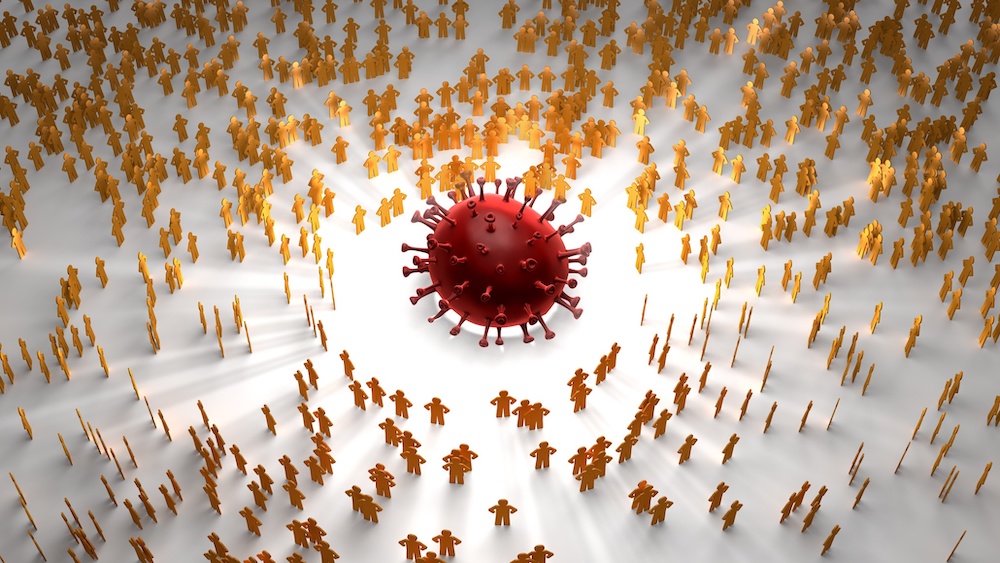If you’re interested in sharing your opinion on any cultural, political or personal topic, create an account here and check out our how-to post to learn more.
____
I see many patients a day at my surgical practice in Atlanta and they always have questions. But this past year has been unlike anything else we’ve ever seen.
This is the case because, with COVID, not only are patients confused, but even health experts struggle to keep up to speed with the latest developments with COVID rates and treatments, vaccines and herd immunity. For example, if you just Google “COVID,” you see over six billion results (6,380,000,000 to be exact!) There’s just so much new and vital information that needs to be processed. And, with so much information overload it is really tough for people to keep up.
In addition, with tens of millions of Americans infected and over 465,000 dead from COVID, people have a tendency to either panic or bury their head in the sand and deny the science. Neither makes any sense, of course.
So, I’d like to take this opportunity to explain some basics regarding our next major milestones to achieving some normalcy in our lives, namely getting people vaccinated and eventually achieving herd immunity from COVID.
The World Health Organization (WHO) tells us that herd immunity is the indirect protection from an infectious disease that happens when a population is largely immune, preferably through vaccinations but also through previous infection.
You see, vaccines train our immune systems to create proteins that fight disease, known as antibodies, just as would happen when we are exposed to a disease. But – crucially – vaccines create immunity without causing illness or resulting complications. Vaccinated people are protected from getting the disease and passing on the pathogen, breaking any chains of transmission.
For example, herd immunity against measles requires about 95% of a population to be vaccinated. The remaining 5% will be protected by the fact that measles will not spread among those who are vaccinated. For polio, the threshold is about 80%. The exact percentage of the population that must be vaccinated against COVID-19 to begin inducing herd immunity is only estimated at this point. This is an important area of research and will likely vary according to the community, the vaccine, the populations prioritized for vaccination and other factors.
Basically, a percentage of the population must be capable of getting a disease in order for it to spread. This is called a threshold proportion. If the proportion of the population that is immune to the disease is greater than this threshold, the spread of the disease will decline. This is known as the herd immunity threshold. That’s what we are aiming for.
The New York Times quotes Dr. Anthony S. Fauci, director of the National Institute of Allergy and Infectious Diseases, as stating that it may take close to 90% immunity to bring the COVID virus to a halt — almost as much as is needed to stop a measles outbreak.
So, herd immunity is possible and we are heading in the right direction. So, what should you be doing in the meantime?
Until we reach herd immunity, we all need to pull together and take the practical – but often annoying – steps necessary to tackle COVID. The Mayo clinic states these things include the following:
-
Avoid large events and mass gatherings.
-
Avoid close contact (within about 6 feet, or 2 meters) with anyone who is sick or has symptoms.
-
Wash your hands often with soap and water for at least 20 seconds, or use an alcohol-based hand sanitizer that contains at least 60% alcohol.
-
Wear a cloth face covering in public spaces where it's difficult to avoid close contact with others.
-
Cover your mouth and nose with your elbow or a tissue when you cough or sneeze, and then throw away the used tissue.
-
Avoid touching your eyes, nose and mouth.
-
Stay home from work, school and public areas if you're sick, unless you're going to get medical care. Avoid public transportation, taxis and ride-sharing if you're sick.
In addition, make sure you consult your doctor and get vaccinated when it’s your turn. Also, we must keep vulnerable groups, such as seniors and those with certain pre-existing conditions, safe and protected from the disease.
Only by being responsible and undertaking these steps can America start to put this tragic COVID pandemic in the rear-view mirror.
